1. What is Omi Jofu?
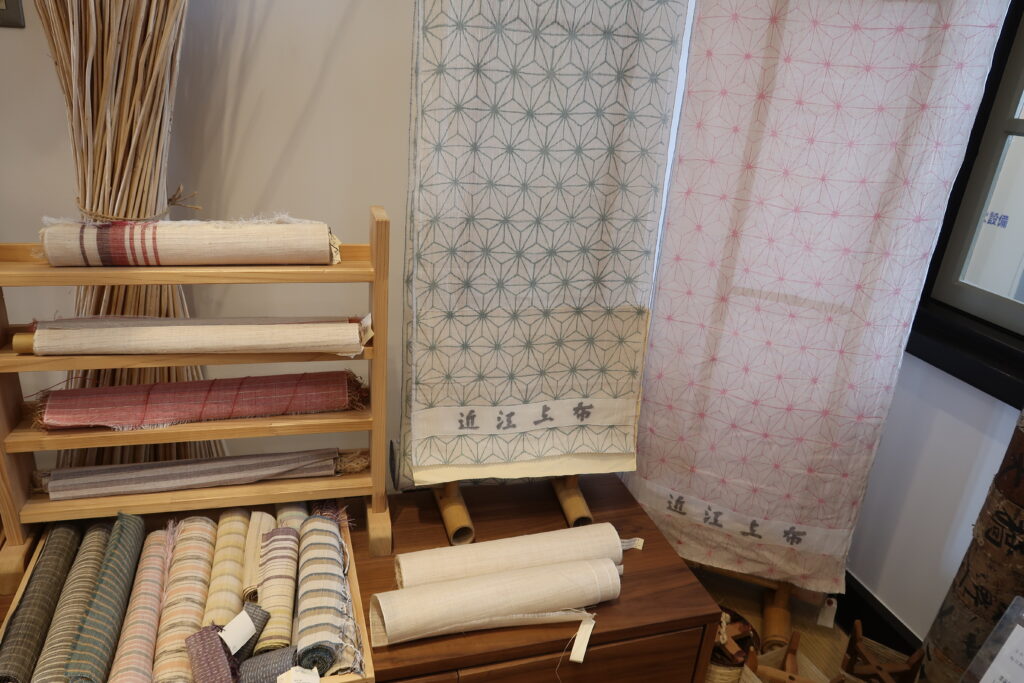
It is a woven fabric made around Echi-gun in the Koto area of Shiga prefecture.
It is woven with ramie and handmade cannabis threads.
The features are a refreshing texture woven with fine linen fibers and an elegant Kasuri pattern.
Not only Kasuri, but also raw hemp made from unbleached hemp is made, and ramie is used for the warp and cannabis is used for the weft.
Handicraft is a persevering task of tearing and joining hemp fibers to make a single thread.
There are two types of Kasuri patterns on Omi Jofu: “warp thread kasuri”, “weft thread kasuri”, and “weft kasuri”.
In the weft Kasuri, the thread is dyed with a paper pattern, and in the weft combined Kasuri, the arc piece, which literally resembles the back of a comb, is impregnated with dye and then dipped in the thread to dye it. The technique is used.
Omi Jofu, which is woven by carefully matching the warp and weft threads, is known as the finest linen fabric, and you can see it worn as a costume on the Hina dolls of the merchants who built a fortune. can.
History
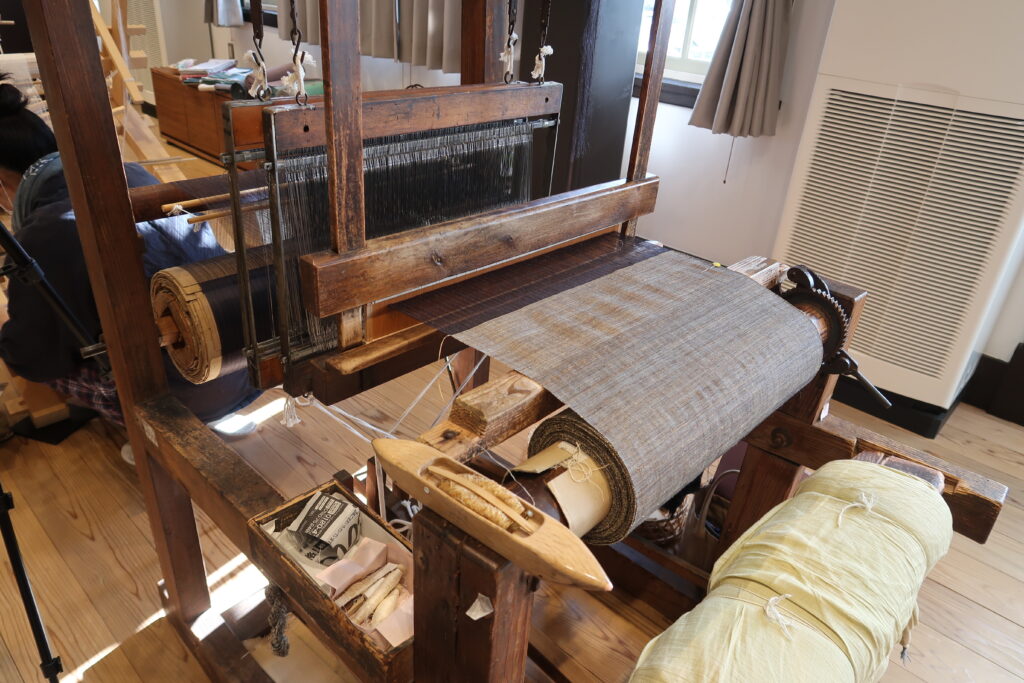
In the eastern part of Lake Biwa, in the Koto area, hemp cultivation has been flourishing for a long time due to the fog generated from Lake Biwa and the humid basin where the Echi and Noto rivers flow.
Hemp fabrics have been made since the Kamakura period using techniques handed down by craftsmen who moved from Kyoto.
Eventually, the woven linen fabrics will be kept secret throughout the country by Omi merchants.
During the Edo period, hemp textiles developed further and prospered as a stable local industry under the protection of the Hikone Domain, which ruled the eastern shore of Lake Biwa.
On the other hand, the ramie in the Tohoku region brought back by Omi merchants has a great influence on the development of Omi Jofu.
From around this time, dyeing technology has also advanced.
In the latter half of the 1700s (Tenmei era), techniques such as “board tightening” and “comb stamping” were developed.
At the end of the order, spun ramie yarn (ramie yarn) was introduced, and in the early Showa period, techniques such as “pattern printing” were also created.
On the other hand, the “board tightening” used until the Taisho era disappears.
Today, Omi Jofu has been handed down as a traditional textile that has continued for 700 years.
By the way, it can be said that the literature describing hemp fibers already existed in the Kofun period, which is the beginning of fibers.
2. Working process
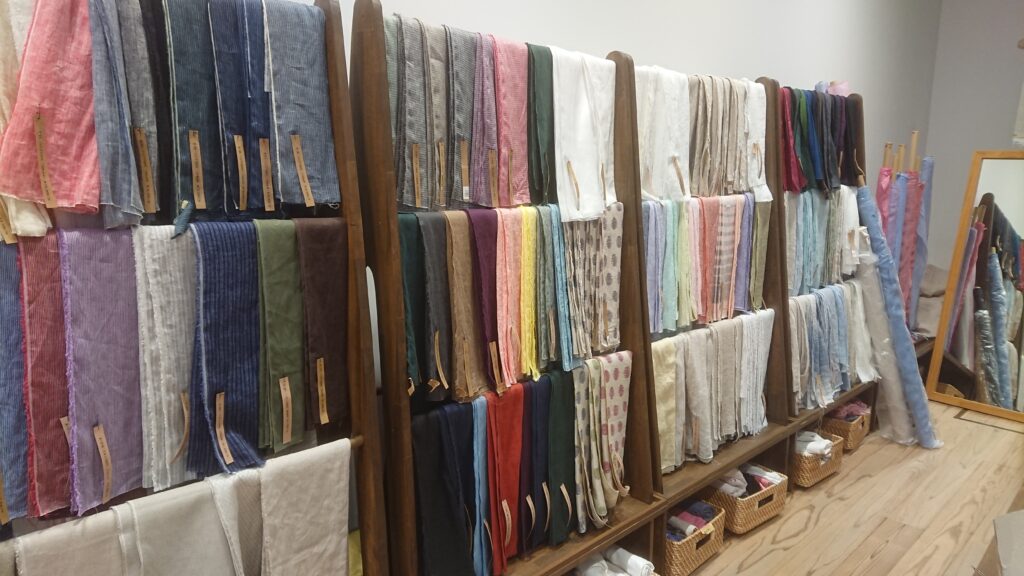
①design
Design the cloth.
Since the patterns are made by color, you need as many patterns as there are colors.
In addition, the pattern arrangement must be considered so that there is no seam between the patterns.
②staining

We do the work of wrapping the weft around the gold frame.
Place the paper pattern on it and place the dye on the piece.
After steaming the thread in a steamer for about 10 minutes, wash it with water and dry it.
In general, weft threads are dyed to make a Kasuri pattern, but there are also combined Kasuri patterns that also dye warp threads.
In addition, dyeing methods such as tie-dyeing and comb-press printing may be used.
③Kasuri

Divide what was wrapped together at the time of the feather roll into pieces and re-roll them to make them into a sardine state.
Rewind it on the thread frame and then on the small tube.
This completes the weft.
④Political economy

Adjust the number and length of warp threads required for weaving.
Thread the reed and thread the warp through the reed to spread it to the weaving width.
Next, pass the warp through the heddle and create a shuttle for the weft.
⑤Hand weaving
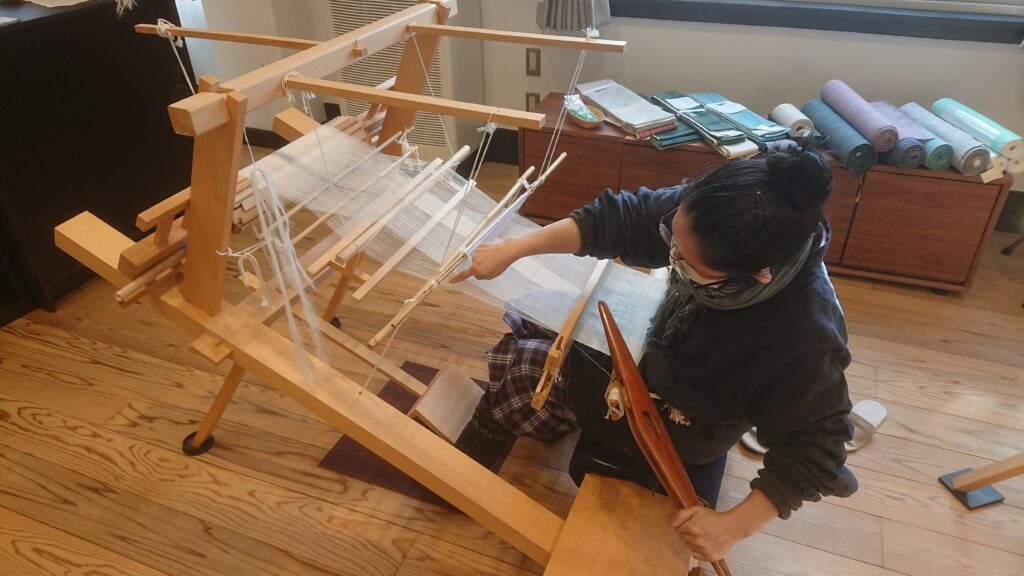
We will weave with the latest care so that the Kasuri pattern does not shift.
Recently, wide cloths such as clothes are also hand-woven, so there are many types of high-end machines.
3.Traditional craftsman

Reiko Yamaguchi
Mr. Yamaguchi is weaving cloth at the Omi Jofu Traditional Industry Center, and he is also instructing people who came to the experience and talking about hemp.
He aimed to become a weaver five years ago.
She is a first-year student of the weaver training course held by the Omi Jofu Traditional Industry Center for three years from 2015.
I have learned the technique from scratch from a senior craftsman from a pure white state with no knowledge or experience of weaving.
Weaving has a very light square band and linen pattern, and all the processes of the cloth are done by hand, so it is inevitably expensive.
It may be difficult for young people to pick it up, but I want to tell you what is good! I think.
It also has the role of passing it on to the next generation.
The linen business card holder woven by Mr. Yamaguchi is in France. It is a popular item that is also sold in Paris.
In the experience, I make coasters etc., and it can be made in about 30 minutes.
4. Initiatives
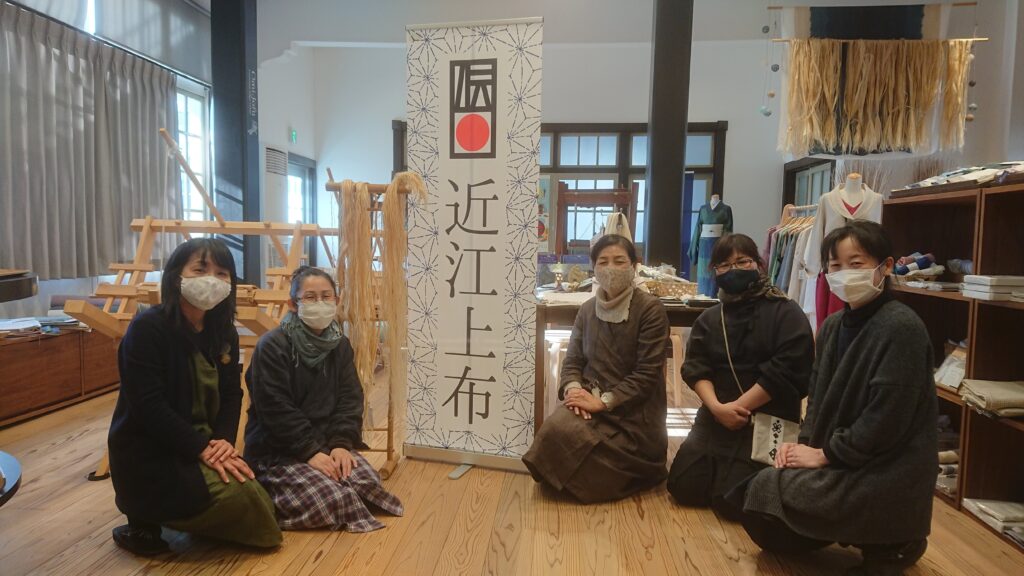
At the Omi Jofu Traditional Industry Center, weaving is being trained as an initiative for succession.
We are working on the development of “weavers” who inherit the traditional techniques of Omi Jofu using the Kobo of the Kaikan.
It is a successor training system that has been elaborated so that it can flexibly respond to people who want to acquire skills more deeply through experiences and workshops.
In addition to just experiencing it, there is also an experience where you can manually take out fibers from plant ramie and make products, and we are also making efforts to make Omi Jofu feel closer to you.
5. Impressions
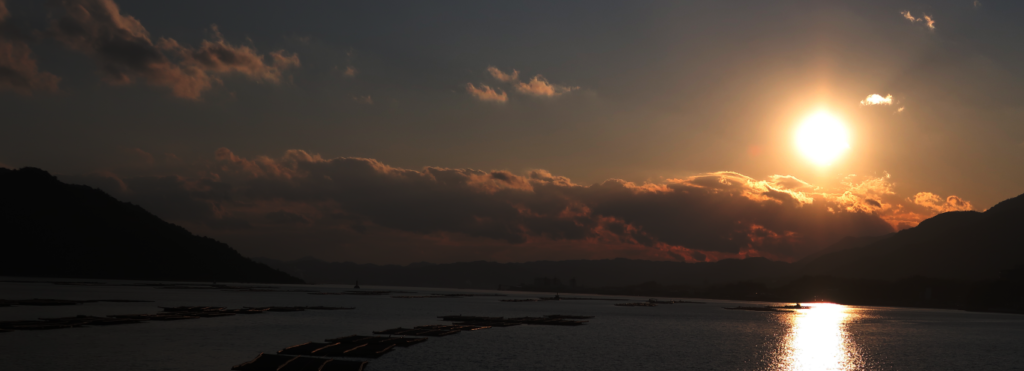
I had an experience this time at the Omi Jofu Sangyo Kaikan, and I really felt the attitude of spreading Omi Jofu from the area again.
Not just an experience, but knowing the beginning and end, and how techniques and traditions have been passed down in it.
It was an experience that conveys feelings that are not conveyed in the text.
The concept of not only getting people to know what is really good, but also how to actually feel it, even if you can feel it, does not take root so easily.
We will solve these problems one by one in future efforts.
Next time preview
Thank you for reading to the end!
I would also like to post some interesting things about Kansai.
Then, have a good trip from now on!
PS. We provide various information about Kansai in Japan, so please feel free to contact us if you would like to visit or experience it!
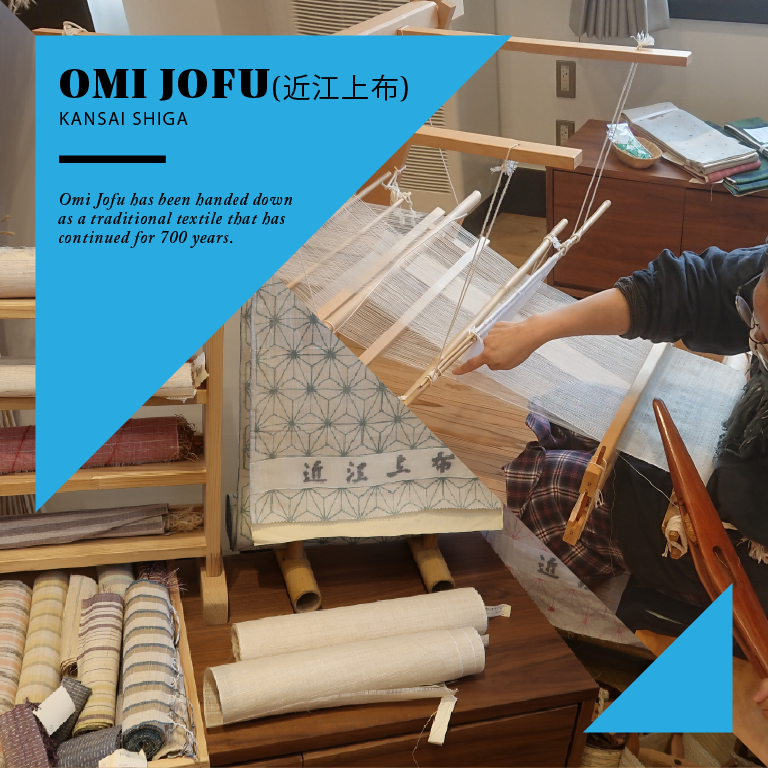


コメント